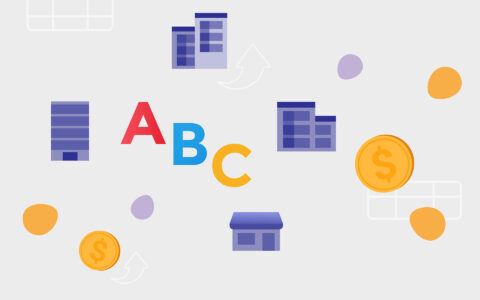Whether you’re selling products, services, or ideas, success ultimately comes down to one thing: trust. People need to be able to believe you’ll deliver what you promise. That you are competent, reliable, and honest. Whether it’s a purchase order, signed contract, or paid invoice. No matter the industry, what you’re really invoicing your clients for is trust.

This holds true in both business and life. Trust is built on relationships, and relationships are built on shared experiences, consistency, and reliability. To stay reliable, we rely on all kinds of tools. One of the most important? Customer Relationship Management systems (CRMs).
B2B Is a Multiparty Negotiation
In B2C, the end customers often make emotional, impulsive decisions. But in B2B, it’s the company or organization making the call, usually involving multiple stakeholders such as procurement officers, managers, or technical specialists. The decision-making process is thus longer, more analytical, and rational. It’s built on negotiation and rounds of internal approvals. While retail decisions are less personal, often emotional, and quick, B2B decisions are more personal, long-term, and trust-driven. You’re not just selling a solution; you’re building a rapport. Where trust plays a central role.
Communication in a B2B setting often resembles engaging in a multiparty negotiation. You’re not dealing with just one person — you are navigating a group of decision-makers, each bringing different levels of authority and influence. And since relationships are built with individuals, you need to be able to find allies and form coalitions even within the same organization to succeed and foster constructive collaboration.
While B2C may seem simpler, it can and should be understood as a multiparty negotiation, too. In any negotiation, strategy is necessary since we need to be able to measure and count everything. If you don’t calculate beforehand to understand the impact of the business negotiations on your bottom line, you’re not negotiating. You’re gambling.
Technology Is a Necessary Tool
I can’t imagine doing business today without technology—from phones and e-mail to AI. And of course, CRM systems that help manage your database of business partners or clients, automate e-mails, track deadlines, and manage projects efficiently...
It’s like using GPS in the car. It’s useful, but if you rely on it blindly, you lose sight of where you really are. The same goes for CRM. You must remember that you’re essentially translating human relationships into data. That behind those names, emails, and notes are real people. And that, with the “little” help from CRM, your job is to turn that data back into meaningful relationships.
The Customer Always Comes First
You should never look at a closed deal or project from your perspective only. It’s not just about what you want to sell or can offer; it’s about what your business partner truly needs. You must be able to put your finger on what’s keeping them with you instead of turning to run away and work with your competition. You should never assume what a customer, client, or partner wants. You need to work with the assumptions you may have, but test them over time to get as accurate insight into their needs as possible.
People don’t like being treated the way you want them to treat you; they want to be treated the way they want to be treated. So there is no argument with a client you can “win”. That's why I love the old business mantra (often attributed to Czech shoemaker Tomáš Baťa): “The customer is always right” as a reminder that in business, you must treat others the way they want to be treated—not with manipulation or pretense, but with genuine respect and understanding.
That way, you create a safe space for honest dialogue, prevent conflict, build mutual trust and connections, find common ground, and strive to understand the other party’s fundamental needs.

Collaboration Drives Profit
You should always aim for long-term collaboration—the core part of any sustainable business strategy, because it leads to its ultimate goal: profit. Fighting with your business partners or engaging in toxic competition is not only draining. It’s a waste of time and of money, too.
At the end of the day, money comes from people. Nowhere else. That’s the simplest truth in business. And if you chase profit at the expense of your partners, eventually no one will want to work with you.
If you treat negotiation like a chess game, someone will end up a loser. And in business, nobody likes to end up the loser. It leaves a bad taste, even in personal relationships. Think about it: when was the last time your better half enjoyed being “proven wrong”, beaten to the ground by your arguments?
Can You Measure Relationships?
In business, just like in life, the stronger and more trusting the relationship you have, the more strain it can take. But you also need to know where the breaking point is—if trust is already shaky, conflicts can escalate and trigger fast.
That’s why even small details, minor tensions—be it failed negotiation, disagreement over price, delivery time, or quantity, they all should be logged in your CRM. That way, you can always look back, see what worked (or didn’t) to strike a deal, and understand patterns over time.
Think of it like a scale: weigh the good moments against the bad in the business relationship and assess whether it’s strong enough to handle any unnecessary pressure or if it needs immediate attention and reinforcement work done.
Shared Experience Builds Bonds
There’s a timeless marketing principle I always bear in mind: a well-handled complaint can turn a dissatisfied customer into a loyal advocate. Even more loyal than someone who’s never had an issue at all. In other words, if a difficult situation unfolds with a business partner, do not hesitate and make it an opportunity to strengthen the relationship. Why? Because your going out of your way to resolve a tough situation shows you care. And that counts more than anything.
Don’t get me wrong. You don’t need to climb the Himalayas or trek the Pacific Crest Trail together to build strong bonds. But let’s be honest—if all you've shared with your colleague or partner is lunch in the designated breakroom or cafeteria, that relationship might be far from deep. That’s why HR departments invest time in organizing team-building events. Because shared experiences strengthen the team. And the same goes for business partnerships.
Relationship management isn’t just a buzzword for HR or sales managers. It’s a critical strategy. Think of the people closest to you: how many birthdays or phone numbers do you remember by heart? But if you forget to call your mom on her birthday, it puts a strain on your relationship. So, take good care of your relationship capital. You can‘t put a price on that.
From People to Data, and Back Again
CRM systems play a crucial role here. It’s important to know (and pass the info) within your company who not to call at your vendor’s office or on your client’s end, what each stakeholder cares about, what information needs to be communicated early, and what some managers simply don’t care about because they don’t have the time for details. Be sure to document meeting takeaways, reactions, and expectations. Track which reports they love and which they ignore. What worked? What didn’t? How often are they willing (or even eager) to meet? What should the report look like? What conflicts have you resolved? When did you go above and beyond to resolve a situation in an unconventional way?
In the long run, it’s about more than just managing some e-mail addresses and sending out automated New Year’s greetings or AI-personalized birthday wishes. Every e-mail, phone number, and name represents a real person. Even that “[email protected]” address is ultimately read by a real assistant or team member. Just remember that behind every contact is a unique story.
And if you manage that story with care, it will repay you in loyalty, trust, and long-term business.











